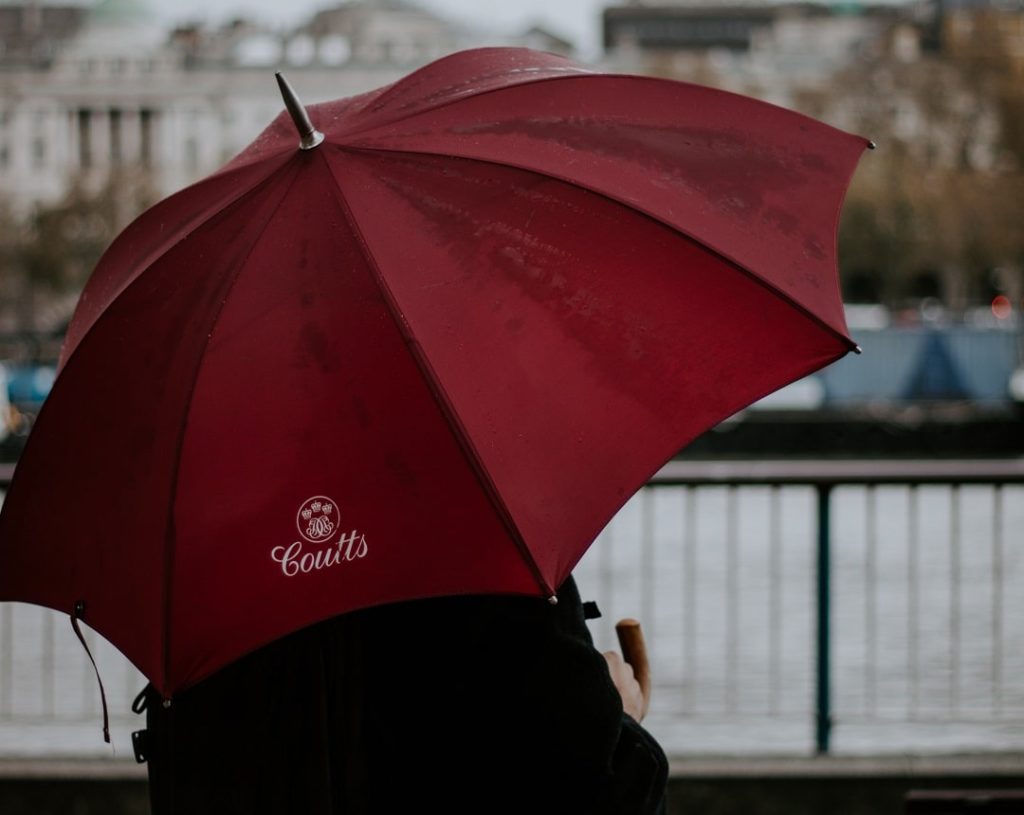
Having become an essential accessory in regions with frequent rainfall, it’s time to look back at the history of the umbrella. This item has a long and varied history, evolving over centuries through continual innovation to become a household staple.
In addition, the ability to personalise umbrellas has made them an effective and practical corporate gift. Many companies use them throughout the year in their promotional campaigns. There are also numerous occasions when they can be used for marketing purposes. Without further ado, let’s explore the origin and evolution of the umbrella.
When was the umbrella invented?
Umbrellas should not be confused with parasols. Although they are very similar objects (and umbrellas are sometimes used for the same purpose as parasols), it is important to highlight that they are different. This distinction is necessary because, in ancient times, civilisations such as those in India, Egypt, and the Middle East used parasols for people of high status to shield their heads from the sun. Thus, the origin of the parasol differs from that of the umbrella.
The culture credited with inventing the umbrella is Ancient China, with the first known graphic references dating back to 2400 BC, although it was actually created in the 11th century BC. The oldest known umbrella is the one found in the tomb of Emperor Qin Shi Huang, where the chariot attached to the terracotta sculptures features an umbrella.
It is not exactly known who invented the umbrella. A Chinese folktale suggests that it was Lu Mei, a young girl who made a bet with her older brother to see who could create an object capable of protecting them from the rain. In one night, Lu Mei crafted a cane from which 32 bamboo sticks extended, covered by a cloth that shielded everything. However, as mentioned earlier, this is merely a legend and not a verified historical fact.
Origin of the word umbrella
The word umbrella has its roots in the Latin word umbra, meaning “shade” or “shadow.” It evolved through the Italian ombra and its diminutive form ombrella, meaning “little shade.” Originally, umbrellas were designed to provide protection from the sun, not the rain—hence the connection to shade in the name. This origin is still reflected in related terms like parasol, which literally means “to shield from the sun.”
Growth in popularity
Umbrellas spread from China via the Silk Road. They were first exported to Japan, Korea, and Persia, and later to Egypt, Ancient Greece, the Assyrian Empire, and, of course, the Roman Empire. In all these regions, the umbrella was primarily used as a parasol, with different customs surrounding its use.

For example, in Egypt, it was a courtly ritual object, signifying high status when used in the presence of the pharaoh. In Greece, only women were permitted to carry it. In the Roman Empire, its use was rare, and when it fell out of fashion, it virtually disappeared from the rest of Europe.
Centuries later, towards the end of the 15th century, umbrellas reappeared as a symbol of prestige. These early versions were made from luxurious materials. By 1710 in France, a lighter, more foldable model was introduced for women, and it became popular after Princess Palatine acquired one, inspiring the rest of the aristocracy to follow suit.
In England, however, the umbrella’s practical use struggled to gain acceptance, as carrying one was considered a sign of lower status (indicating that the person was on foot rather than in a carriage). It wasn’t until the 18th century that the umbrella became more widely used in other countries, largely thanks to philanthropist Jonas Hanway. Despite facing ridicule for being one of the few men to carry an umbrella, Hanway persisted in using it for protection.
Finally, it was during the Victorian era that umbrellas became commercially successful, thanks to innovations such as the steel-framed umbrella with metal ribs and the folding design.
More umbrella curiosities
Continuing with the history of the umbrella, let’s explore some curiosities. For instance, in nature, there is an aquatic plant called Cyperus alternifolius, also known as umbrella papyrus or umbrella palm, an ornamental plant whose shape resembles that of an umbrella.

It is also worth noting that nylon and polyester are relatively recent innovations in umbrella fabric. Historically, materials such as silk, cotton, and even leather were used.
Earlier, we mentioned Jonas Hanway as a pioneer in popularising umbrellas among men. When gentlemen began using them, they preferred black umbrellas, in contrast to the more elaborate and colourful designs chosen by women. This is why black umbrellas became so common, although nowadays umbrellas in a variety of colours are seen across all demographics.
In Indian Buddhism, there are eight symbols of fortune, each associated with the Buddha, and the umbrella is one of them. For Buddhists, the umbrella holds significant meaning, symbolising either a temple as a whole or, alternatively, the handle attached to the umbrella representing the central axis that supports the world.
There is even a museum dedicated to this accessory, located near Lake Maggiore in Italy, called the Museo dell’Ombrello e del Parasole (Umbrella and Parasol Museum).
Umbrellas as promotional gifts
Branded umbrellas are one of the classic promotional gifts in promotional merchandising. Most of us have received one from a trusted organisation. One of their key advantages as a gift for customers or employees is that featuring the company logo on the panels generates high visibility, making them especially useful in regions or seasons with frequent rainfall.

On rainy days, providing these umbrellas is a great idea, allowing potential customers or visitors to take one if needed. They can also be distributed at events, such as trade fairs, or included in employee Welcome Packs.
These accessories are highly popular in the market due to their practicality and usefulness, with a wide variety available to suit different budgets and target audiences.
That concludes our story of the umbrella. If you’d like to add a fact or share a curiosity, feel free to use the comment box below. And, of course, we invite you to explore other posts on our blog.
If you would like a quote or advice on this or other corporate gifts, we would be happy to assist you.